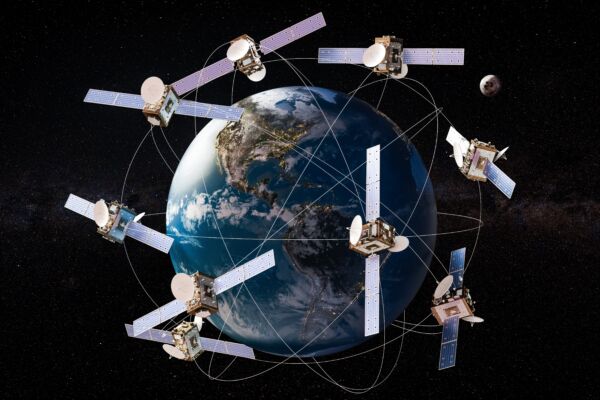In recent years, the number of satellites launched into Earth’s orbit has significantly increased due to advancements in technology. These artificial satellites serve various functions such as communication, weather forecasting, and navigation but need to be placed in Earth’s orbit to be effective. So, how many satellites are currently orbiting the Earth, and could this lead to issues like collisions?
According to a report by Live Science, since the launch of the first artificial satellite, Sputnik-1, in 1957, between 50 to 100 satellites have been launched into Earth’s orbit annually until the 2010s. The emergence of private space companies like SpaceX has led to a sharp increase in the number of satellite launches. By 2024, a rocket carrying satellites is launched approximately every 34 hours.
Jonathan McDowell, an astronomer at the Harvard-Smithsonian Center for Astrophysics in the United States who has been tracking satellites since 1989, stated that as of May 2025, there are about 11,700 satellites in low Earth orbit, which refers to altitudes below 2,000 kilometers from the Earth’s surface.
McDowell further mentioned that currently, there are over 7,400 Starlink satellites in low Earth orbit, accounting for more than 60% of the total active satellites.
However, data from the United Nations Office for Outer Space Affairs suggests that the total number of satellites in Earth’s orbit could reach as high as 14,900, including those that are no longer operational and awaiting removal from orbit.
Experts predict that the number of active satellites could increase nearly tenfold, ultimately stabilizing. If this scenario unfolds, it could pose various challenges for astronomy, space exploration, and the environment, including issues related to space traffic management and space debris.
While it is difficult for scientists to accurately predict how many satellites space companies will launch and when, they can estimate the maximum number of satellites that can safely orbit the Earth. McDowell and other scientists believe that the carrying capacity of low Earth orbit could accommodate up to 100,000 active satellites.
The saturation point of this capacity is currently unknown, but with the increasing rate of launches, some experts predict this scenario could occur before 2050.
One of the significant concerns regarding satellites is space debris. Booster rockets used to launch satellites into space are discarded in low Earth orbit and may drift for years before re-entering the atmosphere. If these debris collide with each other, satellites, or larger spacecraft like the International Space Station, it can generate thousands of smaller fragments, increasing the risk of further collisions.
If left uncontrolled, these fragments may trigger a series of collisions, rendering low Earth orbit inefficient and limiting human capabilities for solar system exploration.
Satellites also reflect light back to the Earth’s surface, causing inconvenience for astronomers conducting optical observations. Radiation leaks from Starlink satellites and other sources of pollution can impact radio astronomy. Some experts worry that certain types of radio astronomy research may become impossible once the carrying capacity reaches saturation.
Moreover, rocket launches release greenhouse gases into the atmosphere, exacerbating human-induced climate change. The carbon emissions from a single rocket launch may exceed that of a commercial airplane flight by tenfold. When rockets re-enter the atmosphere, they release substantial amounts of metallic pollutants into the atmosphere. If these metals accumulate enough in the sky, they could disrupt Earth’s magnetic field, leading to catastrophic consequences.
Although private satellites offer valuable services like connecting rural and impoverished communities to high-speed internet, many experts question whether the benefits outweigh the potential risks. At the very least, most experts agree that there should be a reduction in the frequency of launches until a better understanding of these situations is achieved.

